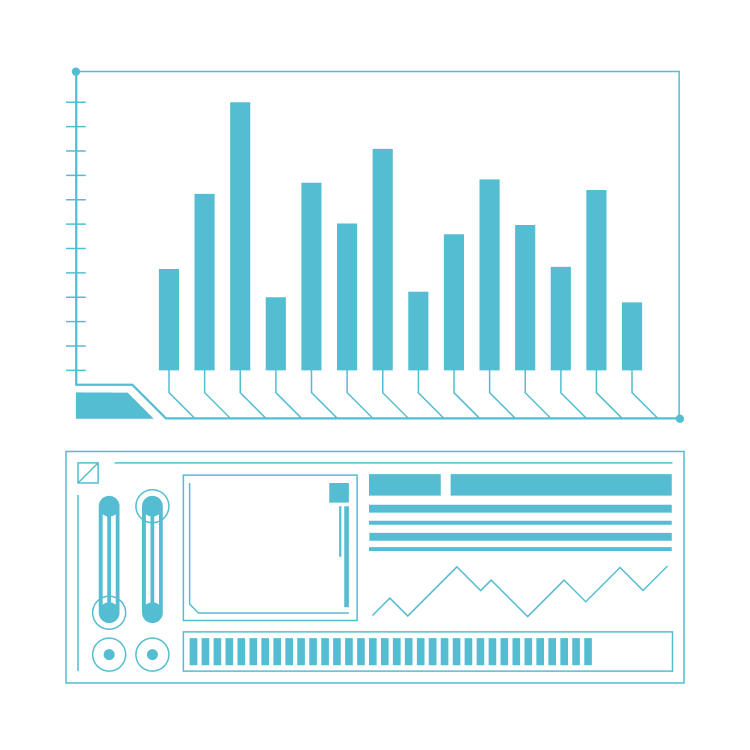


“Sell on the world’s largest marketplace” sounds good and all, but it’s worth it only if you make decent profits at the end of each month, right?
Amazon offers aspiring sellers like you the opportunity to target millions of visitors on its website and set up a successful business. However, there’s a catch (or, in our case, a cost).
Amazon charges sellers fees for using its platform (as does every other online marketplace). So, an obvious question pops up in sellers’ minds: what percentage does Amazon take?
The answer isn’t as straightforward as you’d think—not because the math is complex (it’s pretty easy), but because multiple factors determine your bottom line.
By going through this post, you’ll learn to calculate the percentage Amazon takes from your profits. You’ll also learn more about:
P.S: We’re giving free access to our brand new Amazon profit calculator tool (link at the end). Use it to validate your ideas and determine how much profit you’ll make for different products!
Let’s begin.
The list of Amazon fees is endless. Fortunately, though, you won’t be paying every single one. The main types that every seller should know about are:
Let’s start with the subscription plan fees.
To list products on Amazon, you must subscribe either to the Individual or Professional selling plan—there’s no way around a subscription plan.
Under the individual selling plan, Amazon will charge you $0.99 per sale (exclusive of other fees). Also, you won’t be able to access many features within Amazon Seller Central (the dashboard Amazon sellers use to run their business).
A professional selling plan costs a flat $39.99 per month regardless of the number of items you sell. One of the biggest advantages of the professional selling plan is the ability to run paid ads and increase product visibility.
If you’re new to Amazon selling, go for the individual plan. Then, switch to the professional plan when you start to get the hang of things and sales exceed 40 units per month
Note: The 40 unit per month figure isn’t an arbitrary number—since you’re going to pay around $40 for 40 units sold per month under the individual plan, why not switch to the professional plan and benefit from all the additional perks?
Amazon charges sellers referral fees in exchange for using its platform (i.e., a commission). Both the monthly subscription and referral fees apply to all Amazon sellers; however, unlike the selling plan fees, referral fees are percentage-based and vary according to the product category.
Amazon referral fees can go as low as 3% (e.g. expensive watches) or as high as 45% (when selling Amazon Device Accessories). The referral fee structure undergoes changes now and then, so if you’re serious about selling on Amazon, revisit the numbers every couple of months.
The following is a breakdown of Amazon referral fees for 2022:





When selecting a product category, see whether it falls under a restricted or gated category. Products within gated categories cannot be sold without direct approval from Amazon. To sell in lucrative gated categories, check out our Amazon product category ungating blog.
After discussing fees that all sellers must pay, i.e. referral and subscription fees, let’s talk about fees that apply only in certain situations. One of these is FBA (Fulfillment by Amazon) fees, applicable to sellers enrolled in the program.
As a side note, if you’re considering FBM (Fulfillment by Merchant or self-fulfillment) over FBA just to cut down on your expenses, you may want to reconsider. FBA allows sellers to outsource major business operations like product packaging, storage, shipping, and customer support to Amazon.
Handling logistics and 24/7 customer support is no easy task, especially after sales start to pick up. If you’re a new seller, you’d have to learn about fulfillment processes and policies to remain with ToS, contact and negotiate with fulfillment service providers, respond to customer queries on time, and somehow manage product packaging and storage all by yourself.
Make life easier and go for FBA instead.
Note: Amazon added a 5% Fuel and Inflation Surcharge to FBA fulfillment fees from April 28, 2022, onwards. This also includes FBA goods that fall within the Small and Light product category.
Here’s the 2022 Amazon FBA fee structure for standard-sized non-apparel and apparel goods:

Amazon FBA fees for oversize non-apparel and apparel goods:

Note: Apparel goods include wearable clothing products and accessories like ties, socks, belts, gloves, hats, scarfs, etc.
Amazon maintains a separate FBA fee structure for dangerous (also known as hazmat) goods because the storage, handling, and transportation of such goods require additional care and resources.
Another reason is that Amazon requires extra information before allowing sellers to list dangerous products on its website to mitigate health and safety risks.
It’s worth mentioning that dangerous goods also include everyday consumer products like smartphones, cosmetics, household cleaners, etc.
Go through Amazon’s Dangerous goods identification guide (hazmat) page before listing products for sale; it could be that a product you think is safe is categorized as dangerous by Amazon (and, therefore, requires you to submit extra documentation).
The following is the Amazon FBA fee structure for standard-sized dangerous (hazmat) goods:

And here’s the fee structure for oversized dangerous goods:

Note: To determine a product’s shipping weight, Amazon considers the unit weight or dimensional weight—whichever value is greater.
Amazon introduced the Small and Light program for FBA sellers offering low-priced products not too long ago. The main reason was that lower-priced products recorded relatively lesser profit margins, and the FBA fee at the time didn't take this factor into account.
Fast forward to today, and Amazon has a separate fulfillment fee structure for products that come under the following criteria:
If your product matches these four conditions, here’s what you’ll have to pay as FBA fees:

Note: Small and Light products that fall within the Consumables category (Grocery, Baby, Beauty, Health and Personal Care—but not Apparel) or have a sales price of $5 or below are eligible for a 5% discount if customers order two or more units of the same product.
Amazon operates 110 active fulfillment centers in the US alone where it packs and stores sellers’ inventory for a cost referred to as the FBA monthly inventory storage fees.
Inventory storage fee varies based on factors like the time of year, product size, and whether your goods fall into the dangerous category or not. The table below shows the storage cost breakdown.

Don’t let your inventory sit inside a fulfillment center for too long otherwise Amazon will start charging you long-term storage fees!
Inventory sitting in a fulfillment center for more than 365 days is subject to long-term storage fees plus the monthly inventory storage fee. To make inventory management easier for sellers, Amazon assesses inventory on a FIFO or first-in, first-out basis, i.e. with every sale, inventory that’s been sitting in a fulfillment center for the longest is deducted first.
The long-term inventory storage fee rate is $0.15 per unit or $6.90 per cubic foot, whichever is greater.
The following are a few steps sellers can take to avoid incurring long-term monthly storage fees:
Even though Amazon handles inventory under the FBA program, sellers need to remain mindful of their inventory performance. Avoid penalties and unforeseen inventory-related fees by keeping track of your Inventory Performance Index (IPI) score.
FBM sellers must pack, store, ship orders, and handle customer support by themselves (or hire 3PL service providers to do it for them). As such, there’s no fixed fee structure. Instead, it depends on how well you manage logistics or how much your third-party services providers cost.
Know that there are many hidden costs associated with FBM. For example, the cost of packaging and storing products, reading up on Amazon’s shipping guidelines and policies, the time and resources needed to address customer queries, etc.
By making it this far, you’ve learned about the major fees on Amazon, i.e. the percentage Amazon takes from third-party sellers. Now, let’s discuss Amazon seller fees that apply only in certain situations.
After issuing buyers a refund, Amazon will refund you the referral amount. And from that refund, Amazon deducts what’s known as a refund administration fee which amounts to 20% of the total referral fee or $5—whichever is less.
Amazon charges sellers for high volume, non-media active listings that have yet to make a sell over a 365-day period (to cover up for its cataloging costs). The first 100,000 ASINs are exempt from this fee. Every eligible listing after that is charged $0.005 per month.
Sellers need to pay a fixed $5 per unit fee for each textbook rental.
Products that fall within the media category incur a flat $1.80 closing fee (in addition to the referral fee). These products include Books, Music, Video game consoles, Video, Software and video games, and DVDs.
Though these fees may appear to be a lot, you won’t have to pay all of them and depending on the product you sell (and your business strategy), there’s every opportunity to make big profits!
Because no two businesses are alike, you’ll be hard-pressed to find a blog that will tell you precisely what percentage of your revenue you owe to Amazon.
But there is a tool that can give you exact numbers on how much profit you will make from one or multiple products, and it’s called The ZonGuru Profit Calculator.
The ZonGuru Profit Calculator is completely free, try it out now!
Discover opportunities. Maximize your sales. Grow your Amazon business!
Get started with ZonGuru, access all the tools with a FREE trial.
.webp) Start FREE Trial
Start FREE TrialAmazon’s Algo Has Changed. Get Your Listings AI-Mapped.
 Claim Limited Offer
Claim Limited OfferDiscover your TRUE sales potential with a Free Growth Report.
 Get Free Growth Report
Get Free Growth Report